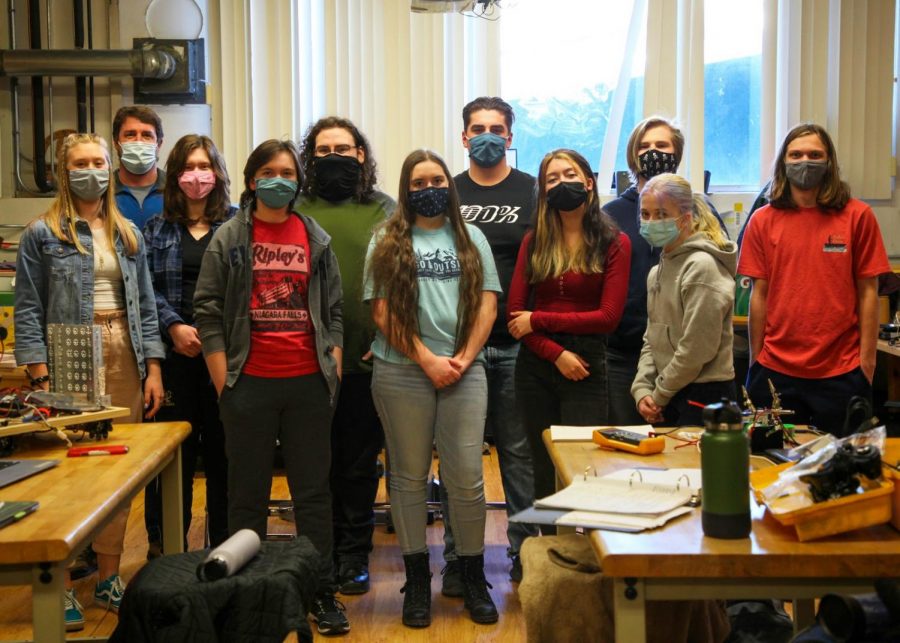Raving Robotics with Symula
Left to right: Kaya Hudak (’22), club advisor Pete Symula, Isabella Williams (’22), Sophia Williams (’24), Christopher Gilmond (’22), Kate Reilly (’22), Even Desautels (’21), Yukina Benjamin (’22), Connor Powell (’22), Aylah Vickery (’22) Not pictured: Penelope Noza (’24) Photo credit: Isabella Williams
March 23, 2021
Bellows Free Academy’s Robotics Club, advised by BFA Design Technology teacher Pete Symula, has been running for the last seven years, and it is held from October until March. During this time, students learn to build and program robots with a variety of design software along with design tools and programs.
“Students use a variety of tools and equipment such as typical saws, but also may use welders, graphic design equipment to make their team shirts [for competitions and an] assortment of hand tools. The sky is really the limit, and it’s never the same because the competition and robot is different every year,” Symula said.
The Robotics Club uses a mix of different materials to build its robots. The main structural parts of the robots usually consist of aluminum but other materials such as wood, rubber and carbon fiber are also encouraged.
When asked what students learn while participating in this club, Symula said, “Students learn how to communicate with each other on many levels, featuring gracious professionalism as a real hallmark of the organization. There needs to be designers, programmers, social media contacts, community outreach, fundraising, and design artists. And we are always looking for local businesses to sponsor our team.”
Symula also spoke about the mechanics students learn about and the design tools they use: “Students develop an understanding of how a multitude of mechanisms work, learning slides, grabbers, all different types of wheels. How to design and construct parts that will work functionally together to perform a task is done using 3D design software such as Solidworks and Onshape. Team members use a variety of design software to produce parts for the robot that can be printed on our 3D printers, laser cutters or CNC plasma machines. How to use sensors and wireless connections work to control the robot’s movement and performance while working to win the game. The programmers use Java program to pregame the robot’s sensors, DC motors and servos that control all parts of the robot.”
Additionally, the Robotics Club members compete in the FIRST Tech Challenge (or FTC) with the hopes of competing in a global event that has more than 300,000 members from around the world. The grand world championships could be held anywhere in the world.
According to Robotics Club member Isabella Williams (’22), they “just had [their] competition.”
Williams added, “I, personally, think we did a good job at the competition. Unfortunately, it only consisted of two presentations this year, and we were not actually able to compete our robot against other teams, but our presentations went well and we were able to show the judges how our robot moves…FTC still has not released their winners or score sheets, and since I haven’t heard any different, I’m assuming we are still waiting for FTC to release that information.”
When asked if this club can be beneficial for students who want a future in design technology or robotics, Symula responded, “Of course it would be on so many levels. Especially for those who wish to continue with a type of engineering in college. To date, students from our team have been awarded over $200,000 in scholarship money to further their education in college through FIRST scholarships they have applied for and been awarded. This year there is $80 million in available scholarships.”
Students interested in joining the Robotics Club should reach out to Pete Symula at [email protected].

